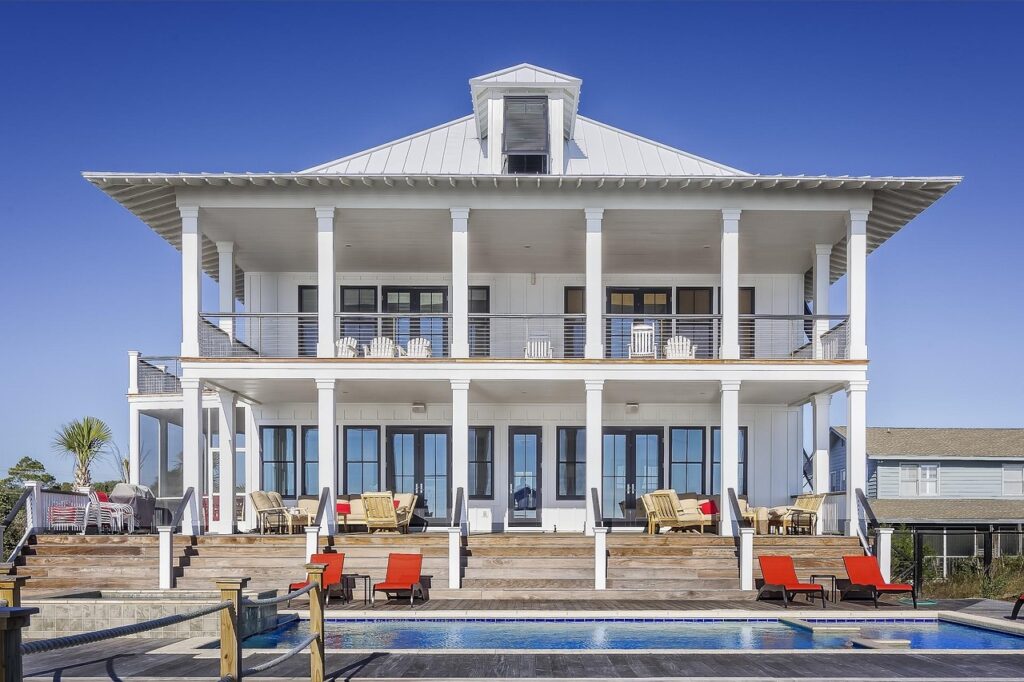What’s Shaping the 2026 Luxury Market
Money’s moving. Fast. In 2026, global wealth isn’t just concentrated it’s mobile, and it’s picking favorites. As ultra high net worth individuals shift their portfolios, luxury real estate follows suit. We’re seeing new hotspots emerge where capital meets climate, infrastructure, and policy. Think less about legacy markets and more about flexibility, access, and protection.
Remote work isn’t dead it’s evolved. For those who can afford it, being tied to a single location just doesn’t make sense. They want beachfront one quarter, alpine serenity the next. That’s why lifestyle migration keeps influencing top tier demand: buyers are chasing variety with a side of stability.
Meanwhile, tax strategy still rules the backend of the decision making process. Jurisdictions with low barriers, relaxed residency rules, or golden visa programs continue drawing in investors looking for both yield and a second passport. Whether it’s for personal freedom, legal insulation, or generational planning, the real estate market is benefiting from a clear hunger for smart shelter plays. Luxury, after all, is rarely about just the property it’s about what it unlocks.
Europe’s Emerging Power Players
Luxury buyers are no longer just looking at Europe’s capital cities they’re zooming in on the edges, where the scenery is better and the value goes further.
Portugal has been on real estate investors’ radar for years, but now the needle is shifting beyond Lisbon and Porto. Smaller coastal towns like Comporta, Ericeira, and Tavira are attracting second home buyers who want charm, privacy, and lower price per meter. With Portugal maintaining its Golden Visa appeal and strong rental yields in hot months, there’s a compelling case for the coastal quiet spots.
In Greece, it’s all about access to affordable luxury. Islands like Paros and Milos offer the kind of lifestyle buyers go to Mykonos for clean views, design forward villas, and proximity to the sea but for less. Add in Greece’s underpriced property compared to Western Europe, and the potential for rising ROI is hard to ignore, especially as tourism infrastructure expands.
Meanwhile, Montenegro is playing a long term game. The country’s status as a candidate for EU membership is already boosting confidence in its markets. Investors are eyeing luxury waterfront projects in places like Tivat and Kotor Bay. With competitive pricing, favorable tax laws, and natural assets that rival more expensive Mediterranean spots, Montenegro sits in an ideal pre boom position.
These aren’t last year’s hotspots they’re the next wave. For investors who want in before the crowd, 2026 may be the window.
North American Contenders
As we look toward 2026, North America is seeing a wave of luxury interest beyond its traditional hubs. Wealthier buyers and investors are turning their attention to scenic, lifestyle driven regions that offer more value, charm, and long term potential.
Mexico’s Pacific Coast: Valle de Guadalupe on the Rise
Often dubbed the “Napa of Mexico,” Valle de Guadalupe is shedding its boutique reputation and stepping into the luxury spotlight.
Upscale vineyard estates and design forward villas are attracting affluent second home buyers
Its proximity to Southern California appeals to bi national investors
Culinary tourism and boutique wellness retreats are fueling experiential luxury demand
Why it matters: Valle de Guadalupe is no longer a hidden gem it’s an emerging opportunity for those seeking sophistication without the crowds.
Canada’s Okanagan Valley: Alpine Wine Country
British Columbia’s Okanagan Valley blends mountain views, lakeside living, and a growing wine scene making it a magnet for high net worth individuals.
Vineyard estates and private waterfront homes are in growing demand
Lifestyle migration from urban centers like Vancouver and Toronto is driving interest
Regional airports and private jet access support global connectivity
Why it matters: The Okanagan offers an alternative to over saturated luxury markets, with year round appeal and strong investment fundamentals.
U.S. Southeast: Emerging Wealth Corridors
Raleigh, North Carolina and Charleston, South Carolina are drawing quiet but serious attention from ultra high net worth (UHNW) buyers.
Tech migration, financial sector growth, and lower tax environments are key attractors
Historic charm meets modern real estate development, offering a unique mix
Rising demand for private communities and custom builds in surrounding suburban areas
Why it matters: These cities combine economic resilience with southern elegance a rare and strategic combination for long term luxury investment.
Asia Pacific’s New Wave

Vietnam is stepping confidently into the high end real estate spotlight. Da Nang and Phu Quoc are leading the charge, with oceanfront villas and branded resorts attracting both global investors and a rising domestic elite. What’s changed? Infrastructure upgrades, visa friendly policies, and a tourism resurgence that’s cutting through the noise. Prices remain competitive compared to regional peers, but that window won’t stay open forever.
Thailand is no stranger to luxury, but 2026 is seeing serious movement outside Bangkok. Chiang Mai’s heritage charm is getting a high end polish think boutique estates with wellness programming and remote work ready builds. Down south, Koh Samui is going more premium, with developers focusing on low density beachfront living designed for longer stays.
Meanwhile, New Zealand’s Queenstown is a market that barely flinches. It’s been a solid bet for years, and now it’s maturing into a long term wealth preservation play. With its mix of scenic seclusion, stable governance, and boutique developments, it continues to draw discerning buyers who want more than just a view they want permanence.
Middle East and Beyond
Dubai: Branded Residences Take Center Stage
Dubai remains a cornerstone of global luxury real estate, and it’s not slowing down in 2026. The city continues to expand its skyline, but the real focus is on branded residences high end projects backed by luxury hotel groups and fashion houses.
Major developers are partnering with global brands (e.g., Armani, Ritz Carlton, Bulgari)
Increasing demand from international buyers looking for managed, turnkey ownership
Strong short term rental yield potential thanks to tourism rebound
Key Insight: Branded residences combine consistent quality with investor confidence, making Dubai a secure yet luxurious bet.
Saudi Arabia: Vision 2030 Fuels Ultra Luxury Development
Saudi Arabia’s Vision 2030 is not just a political initiative it’s reshaping the country’s residential landscape. Ultra luxury districts and smart cities are rising from the desert, aimed squarely at international investors and digital nomads of high net worth.
NEOM and The Line: futuristic zones designed for next level living
New beachfront and desert resort communities near Jeddah and the Red Sea
Government incentives and infrastructure investment accelerating timelines
Investment Angle: Still in early growth stages, Saudi’s luxury market offers long term upside for risk tolerant buyers.
Mauritius: A New Luxury Lifestyle and Citizenship Hub
Often overlooked, Mauritius is gaining major traction as a lifestyle destination and a strategic investment. With welcoming policies for foreign buyers and favorable tax structures, the island is quietly evolving into a dual purpose haven for affluent individuals.
Real estate linked residency and accessible pathways to a second passport
Indian Ocean tranquility paired with high end coastal villas and eco resorts
Legal transparency and political stability add to its appeal
Why It Matters: Growing international interest means Mauritius might not stay ‘under the radar’ for long. Early investors benefit from price advantage and future demand.
Comparing Past & Future Markets
Luxury real estate in 2026 doesn’t look radically different from 2024, but the motives behind big ticket purchases are evolving. If you rewind to 2024, buyers chased lifestyle upgrades, tax advantages, and scarce inventory in destinations that promised both leisure and return. Those fundamentals haven’t changed they’ve just become table stakes.
What’s new is the added filter of long term security. Affluent buyers are factoring in geopolitical stability and climate resilience. That means formerly fringe locations are getting a second look if they’re seen as safe bets for a shifting future. Investors aren’t only asking, “Is this beautiful?” They’re asking, “Will this still make sense in five years?”
Destinations once favored purely for tax or scenery are being weighed differently now. Safety, infrastructure, and sustainability are pushing into the spotlight. The top end buyer is thinking like a futurist and the market is beginning to reflect that.
For reference, take a look back at 2024’s leading destinations to track what held strong and what’s aging out of favor.
On the Radar
Luxury investors used to chase capital cities and household name neighborhoods. That thinking is outdated. Now, second tier cities are stepping up with quieter locations offering better margins, less competition, and more interesting stories. Think Braga over Lisbon, or Puebla instead of Mexico City. The sweet spot lies in well developed infrastructure paired with growing demand, not overcrowded prestige.
Private developments are worth serious attention too. Gated resorts, eco compounds, and branded residences built from the ground up are commanding a premium. These spots promise privacy, customization, and early access pricing for those who move first.
Also key: monitoring countries modernizing their real estate laws. Nations pushing for clearer ownership rights or easing foreign investment regs are quietly creating space for new wealth to enter. Pay close attention to Southeast Asia and parts of Africa the policy loosening is deliberate, not random.
Bottom line: 2026 will reward investors who move with equal parts curiosity and strategy. Revisit standout locations from 2024’s market destinations to find threads worth pulling. Some market winds don’t shift they carry forward.





